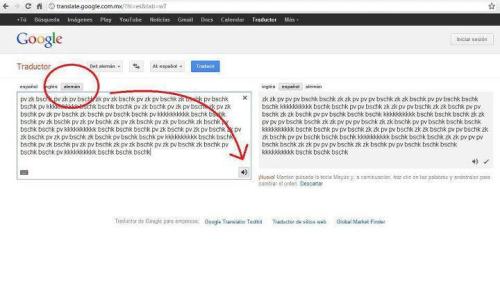|
WinRT (JS and
C++)
|
JS Only
|
C++ Only
|
.NET Only
|
|
|
Parse
|
|
|||
|
Build
|
||||
|
Normalize
|
||||
|
Equality
|
|
|
||
|
Relative
resolution
|
||||
|
Encode data for
including in URI property
|
||||
|
Decode data extracted
from URI property
|
||||
|
Build Query
|
||||
|
Parse Query
|
My third completed Windows Store app is Percent Clock which displays portions of a time span like the time of the day or time until your next birthday, as a percentage. This was a small project I had previously started as a webpage and converted and finished as an HTML JavaScript Windows Store app.
The only somewhat interesting aspect of this app is that its the first app for which I tried charging. I picked the minimum amount for price 1.49 USD as it is a simple app and unsurprisingly it has sold very poorly. I'm considering releasing new instances of the app for specific scenarios:
This is essentially an AV exploit against Super Mario World that results in running the end game code. Watch the video. “…there’s a glitch that’s been known for a while, where Yoshi can end up in the “I have an item in my mouth” state, but not actually have an item in his mouth. When he spits out this nothingness, the game crashes. …That address did not contain code, and so the system crashed. But wait a second. What if, by some sheer coincidence, that address did contain code? The specific address dropped him in somewhere amongst various data for the game’s internal random number generator, and the random number generator can be manipulated in a TAS. Could the game be coerced into running arbitrary code?…”
Welcome news. Glad to hear they’re looking for improvements.
… the USPTO has also worked with Stack Exchange, … to create a new site called Ask Patents. … Examiners or others looking for prior art can post questions about a specific application, and members of the general public can respond with evidence that an applicant was not the first to invent the subject matter of the application.

When they went to the Moon, they received the same per diem compensation as they would have for being away from base in Bakersfield: eight dollars a day, before various deductions (like for accommodation, because the government was providing the bed in the spaceship).
Apollo 11’s Astronauts Received an $8 Per Diem for the Mission to the Moon
The astronauts of Apollo 11: Intrepid explorers. Inspirational heroes. Government employees.
Read more. [Image: Reuters]
Stripe is running a web security capture the flag - a series of increasingly difficult web security exploit challenges. I've finished it and had a lot of fun. Working on a web browser I knew the theory of these various web based attacks, but this was my first chance to put theory into practice with:
Here's a blog post on the CTF behind the scenes setup which has many impressive features including phantom users that can be XSS/CSRF'ed.
I'll have another post on my difficulties and answers for the CTF levels after the contest is over on Wed, but if you're looking for hints, try out the CTF chatroom or the level specific CTF chatroom.
Eyeo2012 - Robert Hodgin
Robert Hodgin presents various 3D animation projects in a humorous fashion.
Neat demo of Visvalingam’s line simplification algorithm in JavaScript applied to a map of the US.
To simplify geometry to suit the displayed resolution, various line simplification algorithms exist. While Douglas–Peucker is the most well-known, Visvalingam’s algorithm may be more effective and has a remarkably intuitive explanation: it progressively removes points with the least-perceptible change.

oldie but goodie, go to google translate and paste this in, turn it to GERMAN and hit the listen button.
pv zk bschk pv zk pv bschk zk pv zk bschk pv zk pv bschk zk bschk pv bschk bschk pv kkkkkkkkkk bschk bschk bschk pv zk bschk pv zk pv bschk zk pv zk bschk pv zk pv bschk zk bschk pv bschk bschk pv kkkkkkkkkk bschk bschk bschk pv zk bschk pv zk pv bschk zk pv zk bschk pv zk pv bschk zk bschk pv bschk bschk pv kkkkkkkkkk bschk bschk bschk pv zk bschk pv zk pv bschk zk pv zk bschk pv zk pv bschk zk bschk pv bschk bschk pv kkkkkkkkkk bschk bschk bschk pv zk bschk pv zk pv bschk zk pv zk bschk pv zk pv bschk zk bschk pv bschk bschk pv kkkkkkkkkk bschk bschk bschk
now turn it to JAPANESE, hit listen…LOL




This line is as good as/better than the
“Yes, I am serious and don’t called me shirley.” line thing.
Javascript tool says if a photo is shopped. It can tell by looking at the pixels. Seriously. Links to cool presentation on the theory behind the algorithm behind the tool: http://www.wired.com/images_blogs/threatlevel/files/bh-usa-07-krawetz.pdf
In short, Marriott is injecting JavaScript into the HTML of every webpage its hotel customers view for the purpose of injecting ads (and in the meantime, breaking YouTube).
recommendations on how Internet Service
Providers can use various remediation techniques to manage the
effects of malicious bot infestations on computers used by their
subscribers.
Detection and notification recommendations.
By the URI RFC there is only one way to represent a particular IPv4 address in the host of a URI. This is the standard dotted decimal notation of four bytes in decimal with no leading zeroes delimited by periods. And no leading zeros are allowed which means there's only one textual representation of a particular IPv4 address.
However as discussed in the URI RFC, there are other forms of IPv4 addresses that although not officially allowed are generally accepted. Many implementations used inet_aton to parse the address from the URI which accepts more than just dotted decimal. Instead of dotted decimal, each dot delimited part can be in decimal, octal (if preceded by a '0') or hex (if preceded by '0x' or '0X'). And that's each section individually - they don't have to match. And there need not be 4 parts: there can be between 1 and 4 (inclusive). In case of less than 4, the last part in the string represents all of the left over bytes, not just one.
For example the following are all equivalent:
The bread and butter of URI related security issues is when one part of the system disagrees with another about the interpretation of the URI. So this non-standard, non-normal form syntax has been been a great source of security issues in the past. Its mostly well known now (CreateUri normalizes these non-normal forms to dotted decimal), but occasionally a good tool for bypassing naive URI blocking systems.
The goal of this experiment was to combine the flipping tables emoticons with the Threw It On The Ground video using shiny new HTML5-ish features and the end result is the table flipper flipping the Threw It On the Ground video.
The table flipper emoticon is CSS before content that changes on hover. Additionally on hover a CSS transform is applied to flip the video upside down several times and move it to the right and there's a CSS transition to animate the flipping. The only issue I ran into is that (at least on Windows) Flash doesn't like to have CSS transform rotations applied to it. So to get the most out of the flip experiment you must opt-in to HTML5 video on YouTube. And of course you must use a browser that supports the various things I just mentioned, like the latest Chrome (or not yet released IE10).